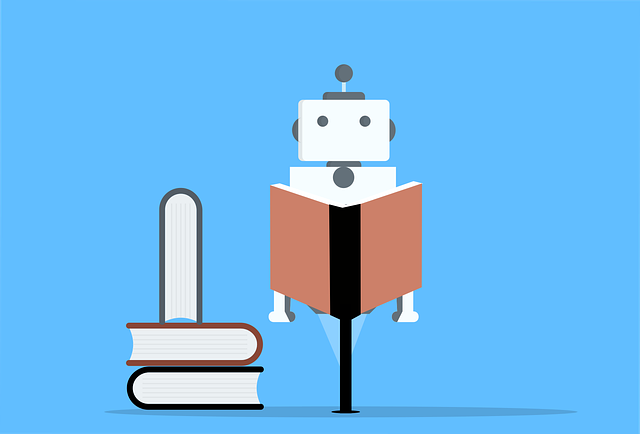|
Image by mohamed_hassan licensed by Pixabay What is ChatGPT?ChatGPT by OpenAI is a language processing tool powered by artificial intelligence (AI). It mimics natural language by identifying and producing the next most likely word or string of words in response to a given prompt. The material used to train the tool’s algorithm included a selection of publicly available content on the internet up to 2021 and is only capable of creating responses to prompts based on the data used in its training. As a result, ChatGPT cannot address current events, accurately serve as a style or grammar guide, reference specific quotes or elements of texts that were not part of its training, or be trusted to supply factually accurate and unbiased information in its current state (CITL UC Santa Cruz, Utrecht University, Forbes). While recent advances in AI hold exciting potential, some instructors have raised questions about how their students might use these tools. We dug into higher education publications and invited individuals on campus to share their thoughts and experiences on how to become curious about these new technologies and integrate AI in the classroom as learning experiences. Turning AI technologies into learning opportunitiesWSU instructors and staff agree on the need to find strategies to minimize the likelihood of students using AI tools like ChatGPT without explicit instructor permission. Nikolina Dmitruchina, associate director and student conduct officer in the Dean of Students Office, is responsible for cases of academic misconduct. She and her team have not come across any cases yet in which students have submitted text created by AI as their own work. Talk with your studentsWhile there are concerns about students misusing AI for assignments due to grade anxiety or being in a time-crunch due to multiple competing deadlines, Nikolina recommends that instructors talk with their students about the importance of academic integrity, not only for the specific class they are taking but also in terms of what it means for students’ future careers and self-integrity. Talking with students is a sentiment also shared by Aaron Retish, professor of Russian history. He suggests having “honest conversations with students about chatbots. I have done that in my classes this term and found students to be more critical and even dismissive of AI results than me.” Have we been here before?The emergence of AI technology shares similarities with other technical developments in the past that instructors have addressed successfully. Aaron notes further that the concept of AI is not new and that WSU instructors are well equipped to deal with its impacts: “We are coming out of the most innovative period of teaching in the history of Wayne State. During lockdown, most of us reimagined how we teach. Teaching remotely meant rethinking assignments to discourage plagiarism and encourage critical thinking.” Other institutions have recently compared AI to the emergence of Wikipedia (CUNY Graduate Center). Instructors were worried that students would lose the ability to conduct original research or critique the accuracy of information presented to them. Now we have incorporated strategies to teach students how to use it as a tool instead of a means to an end. Learn with AIWe also encountered excitement about the potential learning that can occur when AI is integrated into lessons and projects to prepare for the reality of how artificial intelligence is used in the workplace. For example, Deborah Habel, associate professor of teaching - accounting, conducted a demo with her Accounting Information Systems students to illustrate the real-life implications AI has on both accounting as well as cyber security. In a similar fashion, John Heinrichs, associate professor of information systems management, uses Jasper AI with his students to prepare them for future work applications of writing content for social media marketing, email marketing and advertising with the help of artificial intelligence. Some suggestions for engaging students and designing assignmentsAaron Retish has established practices that have worked with his students. He recommends the following:
Other strategies for designing assignments include these summarized recommendations from "ChatGPT and AI Composition Tools" by Georgetown University's Center for New Design and Learning in Scholarship:
If you don’t see ways to incorporate this technology into your teaching, don’t feel pressured to do so. These suggestions might not be applicable for every class, since teaching needs differ based on discipline, your curriculum, and the types of assignments you give. For more information on best practices and recent developments, visit the AI in Teaching and Learning* page in the OTL’s Virtual Resource Hub. The WSU Library has also published a guide on AI for instructors. Additionally, the Academic Senate has established a sub-committee focused on addressing AI in higher education, which is chaired by Richard Pineau. Openness to continue learning and adaptingWe are looking forward to discussing with faculty and staff how we can make the most of integrating this new tool into learning activities and assignments in meaningful and practical ways. Please share success stories and teaching strategies with us that you want to pass along to fellow colleagues or schedule a consultation with us to identify strategies on how to incorporate AI-related activities in your course! * Enroll in the OTL’s Virtual resource hub to access these resources. This email was written by humans, OTL consultants Anabel Stoeckle Livengood and Brooke Shafar, and edited by Carly Overfelt and Tonya Whitehead. Up next in the OTL:Panel: AI in STEM Education: 12:30 - 2:00 p.m. Tuesday, Mar. 21 (virtual) Related off-campus event:Embracing ChatGPT and AI with best authentic assessment strategies: 11 a.m. - noon Wednesday, Mar. 22 (virtual) |

|
